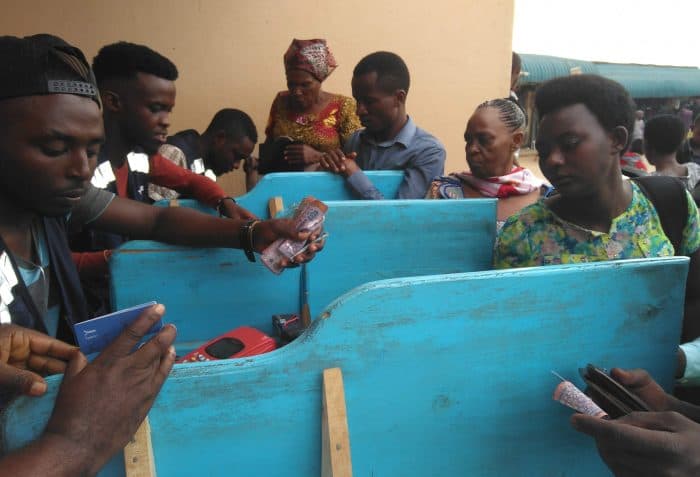Zimbabwe Urban Transport Futures



Status quo
Zimbabwe has an urban population of 5.3 [1] million projected to increase to over 6.5[2] million by 2030. Over the past two decades urbanisation driven by land barons has been characterised by infill, extension and leapfrog developments[3] disregarding city by-laws and planning frameworks. The effects of bad planning and regulatory enforcement are reflected by uncontrolled urban sprawl, rapid decline in the quality of life and accelerated decay in most urban centres across the country. This has extremely undermined the provision of urban transport among a host of other critical urban services. Urban transport is largely deregulated comprising small sedans and minibuses which merely provide adequate public transport services. With public transport being the primary mode of transport for the majority of urban dwellers, a fragmented, chaotic and disorganised urban transport system as currently experienced in many urban centres reinforces spatial inequalities and sidelines a majority from social and economic opportunities.
Development occurs over long periods of time. This requires consistency in strategy and continuity in vision. A reflection on the present Institutional arrangements does no present a collaborative approach to improving urban transport.
The mass importation of second-hand vehicles has not done any good to the already growing traffic volumes. Congestion has reached gridlock levels. Responding to the growing volumes of traffic in the major urban centres’ city authorities with support from local government have explored multiple strategies to combat traffic congestion. Some of these interventions which almost always involve restricting the movement of public transport minibuses have not been successful. In 2017 a directive was placed by the city of Harare to restrict Kombis to pick up and drop off points (holding bays) in the periphery of the central business district. A shuttle service would then complete the first-mile last-mile at an extra cost to what the commuters were already paying. This move meant to decongest the inner CBD greatly inconvenienced and frustrated Harare commuters and was reversed by local government on the same day it was implemented with an unfortunate loss of life. Without clear planning objectives on the delivery of key services especially urban public transport, we place the economy and its resources at risk.
Development occurs over long periods of time. This requires consistency in strategy and continuity in vision. A reflection on the present Institutional arrangements does no present a collaborative approach to improving urban transport. The relationship between local government and local authorities planning and enforcement functions remains largely blurry. Difference in political administration at the national government and local authority level continues to negatively impact institutional collaboration. An institutional and policy analysis on the implementation of an integrated public transport system (IPTS) in Harare revealed that there is a lack of coherent and systematic approach among responsible institutions despite having provisions that allow such implementations from a policy perspective[5]
A review of the transport initiatives taken by the GoZ over the past 3 decades, at times in partnership with local and international agencies, and public authorities indicates that most of the attention has focused on the roads sub-sector. Infrastructure budget allocations have prioritised national trunk roads, provincial and some urban roads. The transport act outlines the general responsibilities of the Roads Authority one of which is a focus on road transport infrastructure. Just about 25% per cent of 88 100 km of Zimbabwe’s road network is paved. This perhaps drives the national focus on nationwide connectivity, this too is important to ensure that accessibility is improved in regions without inland infrastructure such as bridges. But while roads are important, if not necessary, they are not enough to address the transport needs of the country’s growing population. We, therefore, need to define transport problems not just as traffic and infrastructure problems but as social, economic and environmental challenges.
Building consensus
Urban transport should promote an integrated approach to policymaking at the national, regional and local levels for transport services and systems to promote sustainable development, including policies for land use planning, infrastructure, public transport systems and logistics networks taking into account national priorities and circumstances. We need to understand the impact of transport on the socio-economic well being of our urban communities and we need to plan for and be agile to the changes that technology, urbanisation and climate change might bring.
National governments have the responsibility for national transport infrastructure, including roads, railways, ports and airports, but they also provide the regulatory and governance structure within which regional, local government, municipalities, private operators and transport users operate. Finding common ground with related sectors such as urban planning is particularly important to enhance complementary action and foster strong cross-sector collaboration and governance reforms to support more joined-up urban planning and policymaking.
Enhancing and reforming the regulation, governance and operations of urban transport requires recognising that spatial development, urban form and city design are dynamic and require collaborations, strong institutional capacity both at a technical and operational level for long term policy interventions to take effect
The national government should lead in providing a sandbox within which key actors in urban transport can start engaging with new imaginaries of the country’s urban transport systems. City and metropolitan authorities must align planning and enforcement functions to allow conducive innovation ecosystems for urban transport innovation and cross-sector collaboration, especially within the private sector. Private transport operators must be organised to enable long term implementation of public transport solutions. The current fragmentation of operational and governance structures of private transport operators must be discouraged. Instead, they must be encouraged to corporatise and invest in improving service and operations in order to embed themselves in the long term solution of the countries urban transport services. Technology use must be encouraged especially to improve operational efficiency and passenger satisfaction, this may include technology applications and data-centric policy interventions between public and private players.
Enhancing and reforming the regulation, governance and operations of urban transport requires recognising that spatial development, urban form and city design are dynamic and require collaborations, strong institutional capacity both at a technical and operational level for long term policy interventions to take effect[4]. There is no single way to achieve sustainable resilient urban transport systems in Zimbabwe. It is the responsibility of the government and key actors to determine the framework within which the principal decisions pertaining to transport are made and ensure they hold each other accountable towards achieving the goals of sustainable urban transport.
Developing the policy
There have been several reports of a National Transport Policy. It appears very little progress has been made with respect to this and perhaps its time the government reflects on why such an important guiding document has not been concluded and what that means for transport development in the country.
A policy articulates the direction that a government wants to take; the basic framework for downstream planning as well as project identification and prioritisation. It helps choose among multiple approaches using a functional framework for decision making and coordination of intra and intersectoral functions and activities.
In developing a policy it is important to consider the national context, especially existing institutional arrangements. There are multiple political, financial, institutional and technical barriers to developing and implementing transport policy interventions. Factors such as the economy and the level of decentralisation influence the implementation of public infrastructure interventions. However, studying the development of the transport policies in other regions over time it can be shown clearly that a transport policy becomes more and more comprehensive over time. As a basis, a policy should have a distinction between objectives, strategy and selection of measures to monitor and evaluate the performance of the national transport policy**.** Such a policy needs inter alia to articulate the objectives of the different national transport functions particularly for the rural and urban poor[6]. In general, it is conceivable that as a service to, or facilitator of, other sectors, the most important contribution transport makes to the Zimbabwe economy is through its multiple impacts on the performance of other industries as a facilitator of their growth.
Building a constituency to develop a holistic transport policy is necessary to provide a voice for inclusion of divergent views in transport planning and management at the local, regional and national level.
Key policy options :
- Prioritise public transport and non-motorised infrastructure : instead of prioritising roads and infrastructure that primarily benefits private car use. Government and local authorities could prioritise infrastructure spending on public transport, walking and cycling which accommodate and benefit the majority of urban dwellers.
- Prioritise organising private public transport operators : The existing fragmentation with private operators providing public transport must be managed and long term strategic engagements must be promoted to ensure that the operators participate in a reform program as outlined by the national transport policy.
- Introduce Integrated national and urban transport plans : exploring new multistakeholder approaches to urban planning and aligning urban development strategies with the local and national transport planning strategies will facilitate sustainable urban transport at a national regional, and municipal level.
- Institute metropolitan transport authorities: It is important to recognise peri-urban areas and develop metropolitan-wide transport strategies that bundle key land use and transport functions. These require metropolitan transport authorities that focus on deploying integrated urban transport solutions with both regulatory and enforcement capabilities.
- Land value capture : Many urban areas currently experience poor accessibility levels because of a lack of transport infrastructure. This makes many urban areas unlivable because of poor transport connectivity, which negatively impacts land value. Public infrastructure can boost real estate values and create new economic opportunities for cities and their inhabitants. Investing in transport infrastructure unlocks land value and promotes social and economic activities.
[1] World bank data Urban population Zimbabwe
[2] Zimstat – UNFPA: Population projections thematic report
[3] Monitoring Urban Spatial growth in Harare Metropolitan Province
[4] LSE Cities – Coalition for Urban Transitions: National Transport Policy and Cities Key policy interventions to drive compact and connected urban growth
[5] Prospects for Integrated Public Transport System (IPTS) in Harare: An institutional and policy analysis
[6] Coping with demand for urban transport in Zimbabwe: Challenges and options